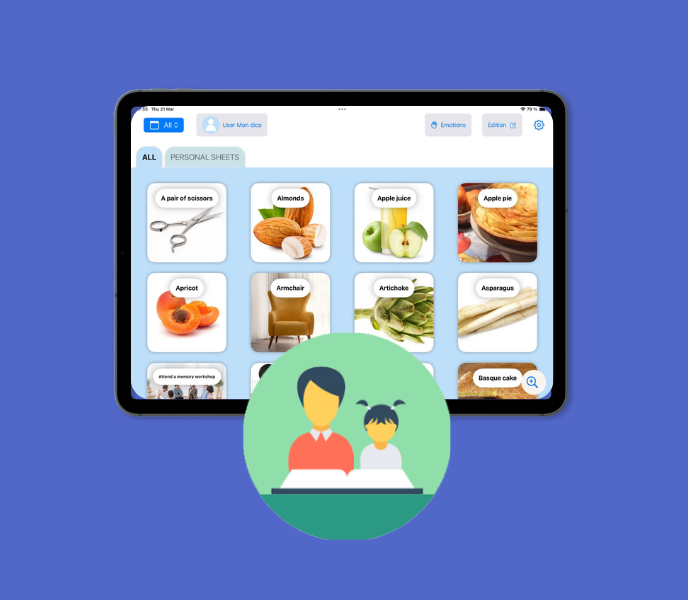Non-verbal communication refers to the transmission of messages without the use of words. It includes facial expressions, body language, gestures, and tone of voice. Non-verbal communication is an essential part of daily life as it helps individuals convey their thoughts, feelings, and intentions. It plays a crucial role in interpersonal relationships, business interactions, and social interactions.
Non-verbal communication is important because it provides additional information that complements verbal communication. It helps individuals understand the true meaning behind the words spoken and allows for a deeper level of connection and understanding. For example, a smile can indicate happiness or friendliness, while a frown can indicate sadness or disapproval. By paying attention to non-verbal cues, individuals can better interpret the intentions and emotions of others.
Understanding their Challenges
There are various types of non-verbal communication, including facial expressions, body movements, eye contact, touch, and vocal cues. However, individuals who are non-verbal communicators face unique challenges in expressing themselves and understanding others. These challenges can include difficulty with speech or language development, physical disabilities that limit movement or gestures, or cognitive impairments that affect comprehension.
Common challenges faced by non-verbal communicators include frustration due to the inability to express themselves effectively, misunderstanding or misinterpretation of non-verbal cues from others, and social isolation due to difficulties in forming connections with others. These challenges can have a significant impact on the overall well-being and quality of life for non-verbal individuals.
Communication barriers can further exacerbate these challenges for non-verbal communicators. These barriers can include lack of awareness and understanding from others, limited access to alternative communication methods or assistive technology, and societal attitudes that marginalize or exclude non-verbal individuals. It is important to recognize and address these barriers in order to create inclusive environments for non-verbal communicators.
Importance of Inclusive Environments for Non-Verbal Individuals
Creating inclusive environments is crucial for non-verbal communicators to feel valued, understood, and included in society. Inclusive environments provide a sense of belonging and acceptance, allowing them to fully participate in social, educational, and professional settings.
Inclusive environments benefit non-verbal communicators by promoting their overall well-being and mental health. When individuals feel included and accepted, they are more likely to have positive self-esteem, develop meaningful relationships, and achieve their full potential.
Inclusive environments also benefit society as a whole by fostering diversity, promoting empathy and understanding, and creating a more equitable society.
Society plays a vital role in creating inclusive environments for non-verbal communicators. It’s important for you to be aware of the challenges that they use to face and to actively work towards creating inclusive spaces. This can be done through education and awareness campaigns, promoting diversity and inclusion in schools and workplaces, and advocating for the rights of non-verbal individuals.
Communication Strategies for Non-Verbal Individuals
They often rely on alternative communication methods to express themselves. These methods can include sign language, picture communication systems, augmentative and alternative communication (AAC) devices, or assistive technology. It’s important to provide them with access to these communication methods in order to facilitate effective communication.
When communicating with them, it’s really important to be patient, attentive, and understanding. Active listening is key in order to fully understand the message being conveyed. It’s also important to be empathetic and sensitive to their needs. This can involve using visual aids or gestures to support communication, allowing extra time for responses, and providing them opportunities to express themselves in their preferred method.
Creating a Welcoming Environment for them
Creating a welcoming environment is essential for these people to feel included and valued. A welcoming environment is one that’s accessible, accepting, and accommodating to their needs.
One strategy for creating a welcoming environment is to promote awareness and understanding among the community. This can be done through education and training programs that provide information about non-verbal communication, alternative communication methods, and strategies for effective communication. By increasing awareness, individuals can better understand the challenges faced by non-verbal communicators and work towards creating inclusive spaces.
Another strategy is to provide support and resources for them and their families. This can include access to assistive technology, communication aids, and resources for learning alternative communication methods. It’s also important to provide them opportunities to participate in social activities, clubs, or organizations where they can connect with others who have similar experiences.
The role of the community is crucial in creating a welcoming environment for non-verbal communicators. By fostering a sense of belonging and acceptance, the community can help them thrive and reach their full potential.

The Assistive Technology solutions
Assistive technology is very important for these people. Even if there are various types of assistive technology available, that can help non-verbal communicators express themselves effectively.
One type of assistive technology is augmentative and alternative communication (AAC) devices. These devices can range from simple picture boards to complex electronic devices that generate speech. AAC devices allow them to select symbols or words to communicate their thoughts, needs, or desires.
Another type of assistive technology is eye-tracking technology. This technology uses sensors to track eye movements and allows them to control a computer or device using their eyes. Eye-tracking technology can be particularly beneficial for individuals with limited mobility or physical disabilities.
Accessibility is crucial when it comes to assistive technology. It is important for these devices to be user-friendly, that they can be customized, and adaptable to their specific needs. It is also important for assistive technology to be affordable and readily available to ensure equal access for all.
Training Staff to Communicate with Non-Verbal Individuals

Staff training is essential in order to effectively communicate with them and create inclusive environments. Training can help staff members develop the knowledge, skills, and attitudes necessary to support people with communication impairments.
One strategy for training staff is to provide education about non-verbal communication and alternative communication methods. This can involve workshops, seminars, or online courses that provide information about the challenges that they face and strategies for an effective communication.
Another strategy is to provide opportunities for staff members to practice their communication skills with them. This can involve role-playing exercises, simulations, or real-life interactions with them. By providing hands-on experience, staff members can develop their communication skills and gain confidence in their ability to support people like this.
Staff members play a crucial role in creating inclusive environments for them. By being knowledgeable, empathetic, and supportive, staff members can help non-verbal individuals feel valued and included
Designing Physical Spaces for Non-Verbal Communicators
Designing physical spaces that are inclusive and accessible is important for non-verbal communicators. Physical spaces should be designed in a way that accommodates the needs of non-verbal individuals and promotes effective communication.
One strategy for designing inclusive physical spaces is to ensure that they are wheelchair accessible and have appropriate signage and wayfinding systems. This can involve installing ramps, elevators, or lifts for individuals with mobility impairments, as well as providing clear signage and visual cues to help navigate the space.
Another strategy is to provide quiet spaces or sensory rooms where non-verbal individuals can retreat to when they need a break or feel overwhelmed. These spaces should be designed to be calming and soothing, with soft lighting, comfortable seating, and sensory materials such as fidget toys or weighted blankets.
Architects and designers play a crucial role in creating inclusive spaces for non-verbal communicators. By considering the needs of non-verbal individuals during the design process, they can create spaces that are welcoming, accessible, and inclusive for all.
Advocating for the Rights of Non-Verbal Individuals
Advocating for their rights is very important to create a more inclusive and equitable society. As they face various challenges and barriers, it can limit their access to education, employment, healthcare, and social opportunities.
Common issues that they face include discrimination, lack of access to communication aids or assistive technology, limited educational opportunities, and social isolation. It’s important to address these issues and advocate for the rights of non-verbal individuals in order to create a more inclusive society.
Strategies for advocating for the rights of non-verbal individuals can include raising awareness about their experiences and challenges, lobbying for policy changes that promote accessibility and inclusion, and supporting organizations that work towards the rights of non-verbal individuals. It is also important to involve non-verbal individuals themselves in advocacy efforts, ensuring that their voices are heard and their needs are addressed.
Best Practices for Inclusive Environments for Non-Verbal Individuals
Creating inclusive environments for non-verbal communicators requires ongoing education, awareness, and action. Some key strategies for creating inclusive environments include:
1. Promoting awareness and understanding among the community through education and training programs.
2. Providing access to alternative communication methods and assistive technology.
3. Being patient, attentive, and empathetic when communicating with non-verbal individuals.
4. Creating welcoming environments that are accessible, accepting, and accommodating to the needs of non-verbal individuals.
5. Training staff members to effectively communicate with non-verbal individuals and create inclusive environments.
6. Designing physical spaces that are inclusive and accessible for non-verbal communicators.
7. Advocating for the rights of non-verbal individuals and addressing the issues and barriers they face.
It is important to recognize that creating inclusive environments is an ongoing process that requires ongoing education, awareness, and action. By promoting diversity and inclusion for non-verbal communicators, we can create a more equitable society where everyone has the opportunity to thrive and reach their full potential.
MY DICO
My Dico is an app developed by Dynseo that includes various features. The app, available on IOS devices is adapted for people with special needs like non-verbal individuals. The user will have access to a visual Dictionary to express its thoughts and needs, an Emotions window and a Routines window with sequencing and games to learn them. My Dico has been created in order to be the daily live’s communication and autonomy assistant for people with linked impairments.

Other articles that might interest you:
No Results Found
The page you requested could not be found. Try refining your search, or use the navigation above to locate the post.

